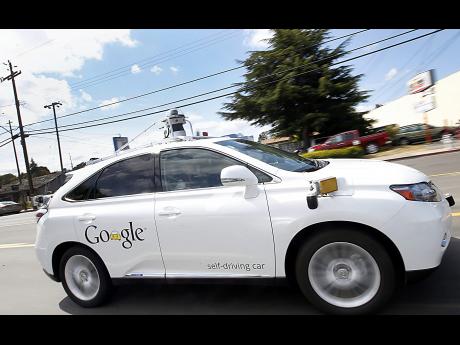Could self-driving cars leave high-speed rail in the rear-view mirror?
When California Governor Jerry Brown announced his plans for a statewide bullet train, my initial reaction was overwhelmingly positive. I loved the notion of a train. I think I was a tad romantic about the idea initially because I had personally witnessed train systems working remarkably well in Europe and Japan.
But time flies - especially when you're developing artificial intelligence. And, in the 10 years since we approved the US$33-billion railroad (which was to have been completed by 2022), the world has changed dramatically. I now worry that the original idea is about to become obsolete - or at least requires some adjusting.
Nearly 10 million cars with self-driving features will be on the road in the US by 2020, according to BI Intelligence, a leading market-research firm. "Just a couple of years after 2020," BI predicts, there will be fully autonomous vehicles on roads capable of handling a range of driving scenarios with little or no interaction from drivers.
All automakers - Ford, General Motors, Volvo, Mercedes-Benz, BMW, Honda, Toyota, Hyundai, Lexus, Renault-Nissan, and, of course, Tesla - are in advanced stages of testing driverless technology, and several have launched partnerships with giants like Apple and Google. Both Ford and General Motors have explored plans with ride-sharing affiliate Lyft to deploy thousands of self-driving electric cars.
I and other Californians who supported the high-speed rail project early on probably had no idea these technologies would advance so quickly. But they have. And it doesn't make sense to continue a conversation regarding the US$77-billion (or US$100-billion, depending on whom you believe) project without acknowledging this new technological reality.
The rationale for moving the high-speed rail project forward 10 years ago was the need to reduce congestion and air pollution. While there clearly still exists a need to address congestion, especially on a regional basis, the next generation of automobiles isn't likely to cause pollution.
Shouldn't California policymakers and voters press pause to determine if this solution is the right one? Shouldn't the new governor first assess the state's expenditures on modernising its roads to ensure they're equipped to handle the capacity?
There's no question that a new rail system could be the appropriate answer to managing traffic congestion between the Central Valley and the Bay Area, as well as in and around Los Angeles, San Diego, and the Inland Empire. My own frequent excursions on Amtrak's Capital Corridor provide convenient, on-time travel with access to Wi-Fi and conference calls while motoring to and from the Bay Area.
My commutes are a practical, affordable alternative to driving and, I've secretly held, my very personal contribution to reducing greenhouse gas emissions. But there's now more to consider.
In the very near future, Californians are going to use cars that won't emit greenhouse gases. Many of us won't even drive them. But they will require roads and charging stations and infrastructure investments we haven't planned for. The next governor should assess our current and future transportation needs in light of new technology advances before heading too far down this particular set of tracks.
- Contributor



